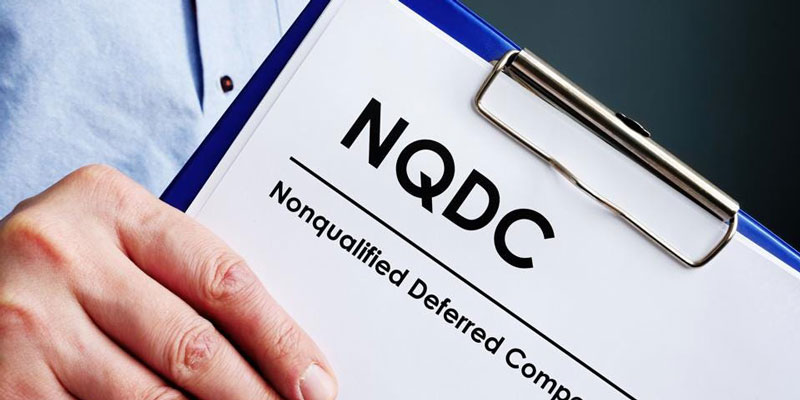How Multipoint Verification Fights Growing Commercial Fraud
Oct 12, 2024 By Elva Flynn
In recent years, commercial fraud has evolved into a serious issue that affects businesses of all sizes. From small startups to large corporations, fraudulent activities have infiltrated every sector, causing financial losses, reputational damage, and legal complications. As businesses become more reliant on digital platforms and data-driven operations, the need for robust fraud prevention systems has never been greater. One such solution is multipoint verification, a strategy that uses multiple layers of identity and transaction verification to detect and prevent fraud.
The Growing Problem of Commercial Fraud
 Commercial fraud refers to deceptive activities conducted by individuals or organizations with the intent of securing unlawful financial gains. This type of fraud can take many forms, including:
Commercial fraud refers to deceptive activities conducted by individuals or organizations with the intent of securing unlawful financial gains. This type of fraud can take many forms, including:
- Financial fraud: False claims, manipulation of financial statements, or misrepresentation of financial data.
- Identity fraud: Impersonation of individuals or organizations to gain unauthorized access to financial or sensitive information.
- Phishing scams: Fraudsters tricking employees or business partners into revealing confidential information or transferring funds.
- Supply chain fraud: Manipulating orders, deliveries, or payments to siphon off products or funds.
The scale of commercial fraud has been increasing in tandem with the rise of digital transactions and data-sharing platforms. According to recent reports, businesses globally lose trillions of dollars annually to fraud-related activities. Fraud not only impacts the bottom line but also damages trust between businesses, customers, and partners.
Why Traditional Fraud Prevention Methods Are Not Enough?
Historically, businesses relied on traditional fraud detection and prevention methods such as manual audits, credit checks, and basic identity verification. While these methods have worked to some extent, they often fall short in today's digital landscape, where fraudsters leverage sophisticated technology to exploit vulnerabilities.
Key challenges with traditional methods include:
- Inability to keep up with new fraud tactics: Fraudsters continuously adapt their techniques, making it difficult for static or reactive fraud prevention measures to remain effective.
- Human error: Manual audits and verifications are prone to mistakes, which fraudsters can exploit.
- Single-point verification: Verifying one aspect of a transaction or identity is often not sufficient to detect fraud, especially in complex, multi-step processes.
Businesses, therefore, need a more advanced, dynamic approach to combating commercial fraud, one that combines technology with comprehensive verification techniques.
What is Multipoint Verification?
Multipoint verification is a fraud prevention strategy that involves verifying multiple aspects of an identity, transaction, or process to ensure legitimacy. Rather than relying on a single data point, such as a password or ID number, multipoint verification examines several factors across various stages of the transaction. This holistic approach increases the likelihood of detecting fraudulent activity before it causes harm.
Multipoint verification typically incorporates the following elements:
- Identity Verification: Confirming the identity of an individual or business involved in a transaction. This may include biometric checks, document verification, or cross-referencing personal information with trusted databases.
- Transaction Validation: Monitoring the flow of transactions to ensure they align with expected patterns. Suspicious anomalies, such as unusually large transfers or atypical recipient accounts, can trigger red flags.
- Location Verification: Confirming the geographic location of the user or transaction, especially for online transactions. Fraudsters often attempt to disguise their location to avoid detection.
- Behavioral Analysis: Tracking user behavior to identify deviations from normal activities. For example, if a long-time customer suddenly engages in high-risk transactions, this may indicate fraudulent behavior.
- Multi-factor Authentication (MFA): Requiring users to provide multiple pieces of evidence to verify their identity, such as passwords, security tokens, and biometric data like fingerprints or facial recognition.
How Multipoint Verification Prevents Commercial Fraud?
Multipoint verification combats commercial fraud by adding layers of protection that make it significantly harder for fraudsters to succeed. Each layer serves as a checkpoint that must be passed before a transaction or interaction is approved. Fraudsters may succeed in bypassing one point of verification, but it becomes exponentially harder to fool several different verification systems working in tandem.
Here are some ways multipoint verification specifically helps prevent fraud:
1. Detection of Anomalous Behavior
Multipoint verification allows businesses to track and analyze behavior across multiple stages of a transaction. By doing so, it becomes easier to detect unusual or suspicious activities, such as a customer suddenly changing their purchasing patterns or a supplier altering delivery details without prior notice. This early detection allows businesses to investigate and halt fraudulent transactions before they escalate.
2. Improved Identity Validation
Identity fraud is one of the most common types of commercial fraud. Traditional methods like password protection or one-time verification are often insufficient. Multipoint verification, on the other hand, verifies identity using several data points, including physical identifiers like fingerprints or facial recognition, as well as device-based information like IP addresses. This combination drastically reduces the chances of identity fraud succeeding.
3. Mitigating Insider Threats
Fraud doesn't always come from external sources. Insider threats, where employees or business partners engage in fraudulent activities, are a significant risk for many businesses. Multipoint verification can help monitor and track the actions of internal users, flagging suspicious activity like unauthorized access to sensitive information or unapproved changes to financial records.
4. Reduced False Positives
Many businesses face the challenge of balancing fraud prevention with ensuring a smooth experience for legitimate customers. False positives, where legitimate transactions are incorrectly flagged as fraudulent, can frustrate customers and harm the business. Multipoint verification provides a more comprehensive view of each transaction, reducing the likelihood of false positives by only flagging genuinely suspicious activities.
Implementing Multipoint Verification
 To effectively combat commercial fraud, businesses need to implement multipoint verification strategically. Here are some best practices for successful implementation:
To effectively combat commercial fraud, businesses need to implement multipoint verification strategically. Here are some best practices for successful implementation:
1. Tailor Verification Points to Business Needs
Not all businesses face the same fraud risks, so its essential to tailor multipoint verification based on the specific threats your business encounters. For example, an e-commerce platform might focus heavily on transaction and location verification, while a B2B service provider might prioritize identity and behavior verification.
2. Integrate with Existing Fraud Prevention Tools
Multipoint verification should complement, not replace, existing fraud prevention strategies. Integrating it with other tools like machine learning algorithms, AI-powered fraud detection software, and secure payment gateways enhances its effectiveness.
3. Monitor and Update Regularly
The fraud landscape is continually evolving, and fraudsters constantly find new ways to exploit vulnerabilities. Businesses must monitor their multipoint verification system and update it as needed to address emerging threats. Regular audits and assessments are essential to ensure the system remains robust and effective.
4. Educate Employees and Partners
Fraud prevention is a team effort, and everyone involved in the business process should be educated on the importance of multipoint verification. Employees, suppliers, and business partners must understand how the system works and be trained to recognize suspicious activities that may indicate fraud.
Conclusion
Commercial fraud poses a growing threat to businesses worldwide, with losses amounting to billions of dollars each year. Traditional fraud prevention methods are no longer sufficient to combat increasingly sophisticated fraud tactics. Multipoint verification offers a robust, multi-layered approach to detecting and preventing fraud by verifying several key data points in every transaction.
By implementing multipoint verification, businesses can reduce their vulnerability to fraud, protect their finances, and maintain the trust of their customers and partners. As technology advances, multipoint verification will likely become an essential component of a comprehensive fraud prevention strategy, helping businesses stay one step ahead of fraudsters.

Roofstock Review 2024: Real Estate Investment Made Easier

Tracing the Evolution of the Chinese Yuan Renminbi: From Ancient Beginnings to Modern Power

What Is Warren Buffett's Investment Strategy?

T Rowe Price Funds

Securing Contractor Insurance: A Step-by-Step Procurement Guide

Why There Is No Dell Stock

Understanding and Preventing Identity Fraud in Commercial Applications

The Key Distinctions Between Alpha and Beta Personalities

How Multipoint Verification Fights Growing Commercial Fraud

